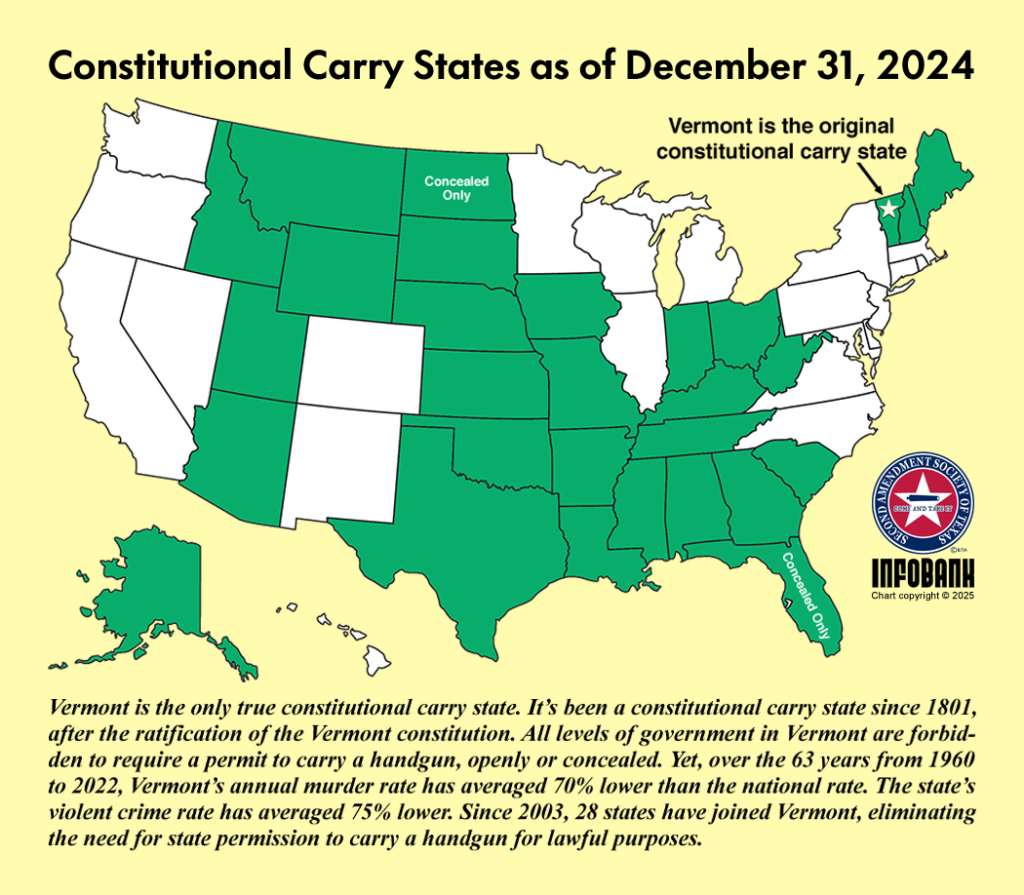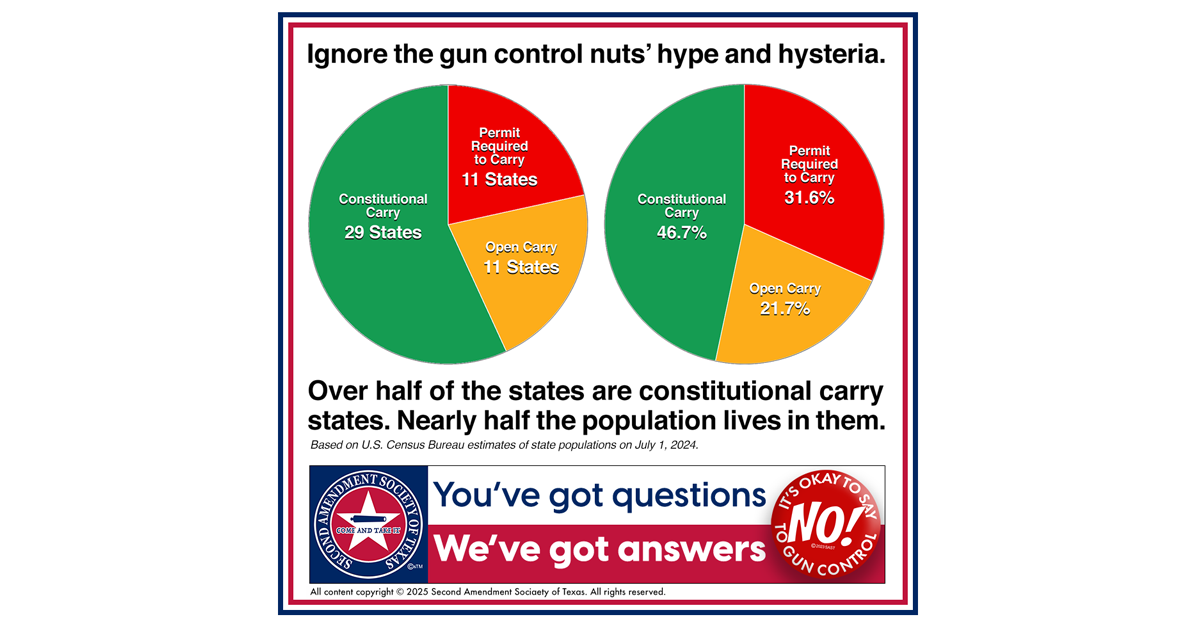With multiple bills in the House and Senate calling for nationwide handgun carry reciprocity or the establishment of constitutional, or permitless, handgun carry on a national basis, which would override the huge variations in state licensing regimes, we can count on the anti-gun movement and some of the more rabid legislators and and state leaders (Gavin Newsom of California, Phil Murphy of New Jersey and Michelle Lujan Grisham of New Mexico, and New York’s Kathy Hochul come to mind) to start foaming at the mouth and begin chanting the same dire predictions they’ve used 28 times before. Apparently, being debunked by the facts every single time doesn’t faze them.
There are a couple of truths they will try desperately to make Americans ignore. First, the majority of U.S. states already have some form of permitless carry and 29 states, a smaller majority, have constitutional carry. In addition, these states tend to have higher percentages of households containing one or more firearms. Second, there’s no hiding behind the catchall term a”gun violence.” We are not aware of a single state that requires a license or permit to carry a gun to commit suicide or in anticipation of an accident.
The gun-grabbers are limited to actual violence, which means acts by one person on another person with intent to cause harm or death. They’re stuck with just murder, non-negligent manslaughter, and aggravated assault, which radically change the landscape.
Unlike gun control laws, which have produced double-digit increases in homicides in multiple states that enacted them, such as Colorado and Washington, constitutional carry doesn’t appear to have a significant impact on the rates of violent acts committed with firearms. In fact, the only change of any significance appears to be an increase in justifiable homicides. Unfortunately for gun control enthusiasts, this means constitutional carry is working as promised. And their beloved connection between gun ownership and “gun violence” falls apart when it comes to constitutional carry versus draconian licensing regimes. Of the ten states with the lowest firearm homicide rates, seven are constitutional carry states.
In California, the shining example of gun control in action, the estimated number of households with firearm is 57% lower than in Montana, the state with the highest percentage of households with guns. Yet California’s firearm homicide rate is 24% higher. In addition, the majority of gun-related deaths in California are homicides while the majority in Montana are suicides. So which state is more “violent?”
To get a better grasp of how much the constitutional carry movement has grown, remember up until 2002, there was only one constitutional carry state. The map below shows how common permitless carry has become since then.

Incidentally, we’ve created our own shining example: Vermont, which for years has had violent crime and murder rates well below the national rate, has stumbled. The exodus of refugees from New York has altered the electorate and the state began passing popular gun control laws. To show what really happens when voters fall for the siren songs of Everytown, Giffords, and Moms, the average murder rate over the five years from 2018 to 2022 was 6% higher, compared to the five years before the laws were passed: The violent crime rate jumped 38 percent.
Constitutional carry is the exercise of every American’s right to keep and bear arms. Since the ratification of the Fourteenth Amendment in 1868, the prohibitions in the Bill of Rights have gradually become binding on the states. In 2010, the Supreme Court ruled the Second Amendment fully applied to the states under the Due Process Clause.
By refusing to yield control over the citizens of their states and treat their rights as is required by the supreme law of the land, states such as California, Hawaii, Maryland, Massachusetts, New Jersey, and New York have become outlaws. By the exercise of its powers under the Commerce Clause, the Supremacy Clause, and the Necessary and Proper Clause, Congress can redress decades of petty tyranny.
All data referenced in this post was obtained from the Centers for Disease Control and Prevention, the Federal Bureau of Investigation, the Vermont Department of Public Safety, and Pew Research.

